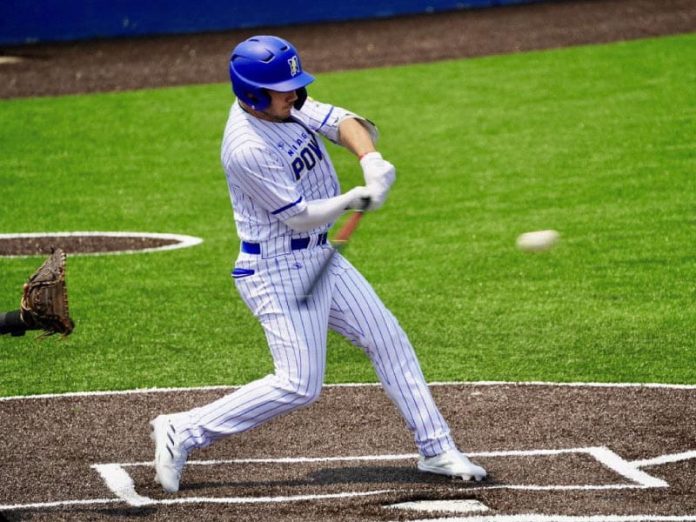
Standing in the batter’s box during an October 2022 practice at Iona University in New Rochelle, New York, Nick DiCarlo was planning to bunt the next pitch and run to first base.
Instead, the fastball that came toward DiCarlo at 80-plus miles per hour hit him in the chest. He took two steps and collapsed.
DiCarlo’s coach, Conor Burke, and teammates rushed to him. He wasn’t breathing.
The coach started CPR. An ambulance was dispatched and paramedics used a defibrillator to restore his heart to a normal rhythm, then rushed him to the hospital.
Doctors put the 19-year-old sophomore into a medically induced coma to help his body begin healing from the trauma. DiCarlo had an MRI to check for potential damage to his brain and spine.
Because doctors found no problems, they were able to transport DiCarlo to a trauma center in New York City that was better capable of providing the care he needed.
Further testing showed that DiCarlo had experienced commotio cordis, a rare cardiac arrest immediately following a blow to the chest over the heart during a precise moment in a heartbeat. The sudden impact disrupts the heart rhythm and causes the heart to stop.
John DiCarlo, Nick’s father, said it was “mind-blowing” that his son was hit with just enough force in just the right spot to cause the heart to stop.
Because it’s caused by such an unusual set of circumstances, only a small number of commotio cordis cases are reported each year.
Yet just a few months after Nick’s cardiac arrest, Buffalo Bills safety Damar Hamlin had a cardiac arrest after making a tackle during a “Monday Night Football” game. Hamlin later announced the cause was commotio cordis.
Nick’s mom, Nicole Baker, and John drove seven hours from their home in Lewiston, New York, to be at the hospital with their son.
They arrived to find Nick breathing with a ventilator and wrapped in cold compresses to reduce his metabolic rate and help prevent injury to the brain.
John and Nicole sat at Nick’s bedside from Thursday to Sunday, waiting for their son to wake up. On Sunday afternoon, Nick woke up and doctors took him off the ventilator to breathe on his own.
Between visits from his teammates and coaches, Nick had more tests to make sure he was OK. He was released from the hospital five days after he was admitted.
Although Nick experienced no long-term damage, there was plenty of pain in the short term.
“I couldn’t do a single pushup – that’s how bad my chest hurt,” Nick said. “The best way I can describe it is to say I felt like I got hit by a car; everything hurt.”
Nick grew up in Lewiston, about a half-hour from Buffalo. So he’s a lifelong Bills fan. He was watching the game with his dad when Hamlin went down on what looked like a normal play.
“But then I watched the replay, saw that he got hit (in the chest), stood up and took two steps and he collapsed,” Nick said. “I thought, ‘That’s exactly what happened to me.'”
Nick pushed himself through intense cardiac rehabilitation sessions to rebuild his strength. He returned to practice just weeks later and played seven games in the spring. He’s since transferred to D’Youville University in Buffalo. He’ll continue playing baseball this upcoming season.
“There was never a doubt in my mind that I’d return to playing,” he said.
There is one big change, though. Nick now wears a chest protector under his jersey. Several of his former Iona teammates do, too.
The experience also led Nick’s family to start including chest protectors in the equipment it provides to youth baseball players through their nonprofit, Youth Sports Alliance.
“I was extremely blessed to be able make a 100% recovery, and I want to give back,” Nick said.
Written by Jodi Helmer.
If you care about heart health, please read studies about diabetes drug that could revolutionize heart failure treatment, and this drug can be a low-cost heart failure treatment
For more information about heart health, please see recent studies that exercise in middle age reversed worrisome heart failure, and results showing this drug combo can cut risk of stroke and heart attack by half.



